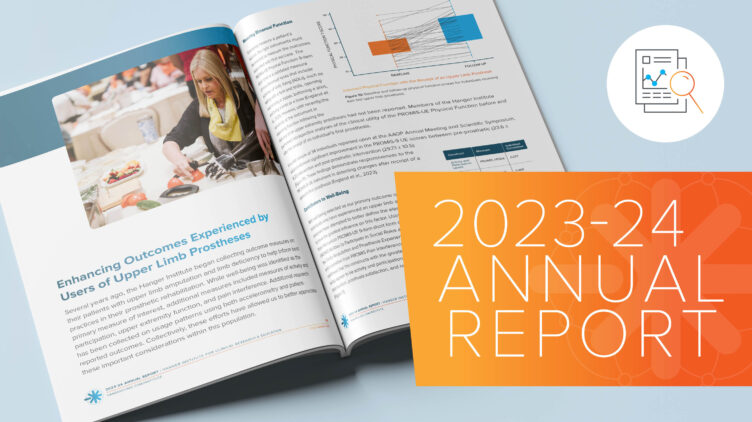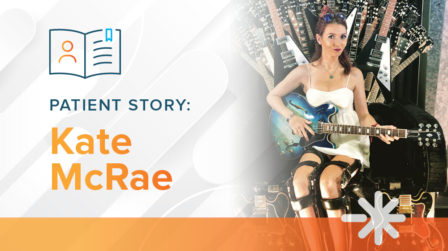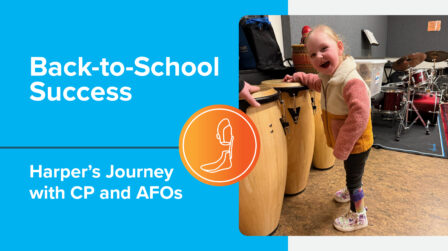The Hanger Institute for Clinical Research & Education Issues 2023-2024 Annual Report Highlighting Efforts to Advance Orthotic and Prosthetic Care

Our key initiatives within the Hanger Institute are designed to address and navigate a rapidly changing healthcare environment, with a focus on positively impacting the lives of those in need of life-changing orthotic and prosthetic (O&P) care. Made possible by strategic collaboration and partnerships with a wide range of academic and clinical institutions, we are pleased to share the 2023-2024 Hanger Institute for Clinical Research & Education’s Annual Report.
Hanger Institute Annual Report
Review the progress the Hanger Institute for Clinical Research & Education has made to help improve clinical outcomes and provide evidence-based care.

With a nation that is moving from a fee-for-service approach to one that rewards outcomes, efficiency, quality, and population health, along with a more complex regulatory environment, reimbursement challenges, and continuing uncertainty, we are leveraging our resources, expanding our networks, and contributing to our knowledge base with an unwavering commitment to advancing evidence-based O&P practice.
James H. Campbell, PhDSenior Vice President and Chief Clinical Officer
Highlights include:
Establishing Expectations Following Lower Limb Amputation
- CASTLE 1: Provides mobility curves across patient age to predict the average mobility for a patient based on their age, amputation level, and etiology. With this understanding, clinicians are better positioned to help patients set realistic mobility goals. Additionally, inclusion of microprocessor-controlled knees (MPKs) in prosthetic care plans for individuals with above-knee amputations due to diabetes/dysvascular disease can have a significant impact on the expected mobility for individuals across a wide spectrum of age ranges.
- SAFE-AMP 1: Individuals with lower limb prostheses who reported low functional mobility had significantly higher odds of experiencing an injurious fall. This finding underscores the importance of working towards increasing patient mobility – either through a change in prosthetic intervention and/or physical therapy.
- GGEM Study: Gender, Geography, and Employment: Highlights the importance of considering gender, geography, and employment when setting patient mobility goals and allows clinicians to better estimate fall risk and plan preventative intervention effectively. Specifically, individuals who are employed have 3.6 times higher odds of reaching increased mobility compared to those unemployed, underscoring the significant correlation between employment status and higher levels of functional mobility among lower limb prosthesis users.
Caring for Those Who Have Experienced an Amputation Due to Diabetes or Dysvascular Disease – Clinical Review
- Prosthetic Mobility and Comorbid Health: In MAAT 2, it was observed that the presence of most comorbid health conditions were not associated with decreased prosthetic mobility. Ultimately, only advanced age, history of stroke, peripheral vascular disease (PVD), and anxiety/ panic disorders were mildly associated with reduced prosthetic mobility.
- Mobility for Individuals with Diabetic/Dysvascular Amputation: For individuals with amputation due to diabetes/dysvascular disease, findings in MAAT 5 suggest that certain ankle-foot technologies can increase prosthetic mobility, and in SAFE-AMP 1 it was observed that those from this population using MPKs significantly reduce the odds of incurring an injurious fall.
Enhancing Outcomes Experienced by Users of Upper Limb Prostheses
- Significant Predictors of Well-Being Following Upper Limb Amputation: Analysis of upper limb patient responses across various instruments demonstrated that the greatest relationship to well-being are activity and participation levels, bimanual upper limb function, prosthesis satisfaction, and reduced pain interference.
Quantifying Mobility Constraints and Validating New Technologies Among Users of Lower Limb Orthoses
- Development of the Orthotic Patient-Reported Outcomes-Mobility (OPRO-M): The first successful attempt to create an assessment tool that can discern the differences observed in mobility among individuals with different types of lower limb paralysis, fall histories, and levels of reliance on lower limb assistive devices.
More Published Research
Review additional studies conducted by the Hanger Institute for Clinical Research and Education, in collaboration with leading researchers, clinical, and academic institutions.
Latest Updates
Subscribe to stay up-to-date on our latest posts.


